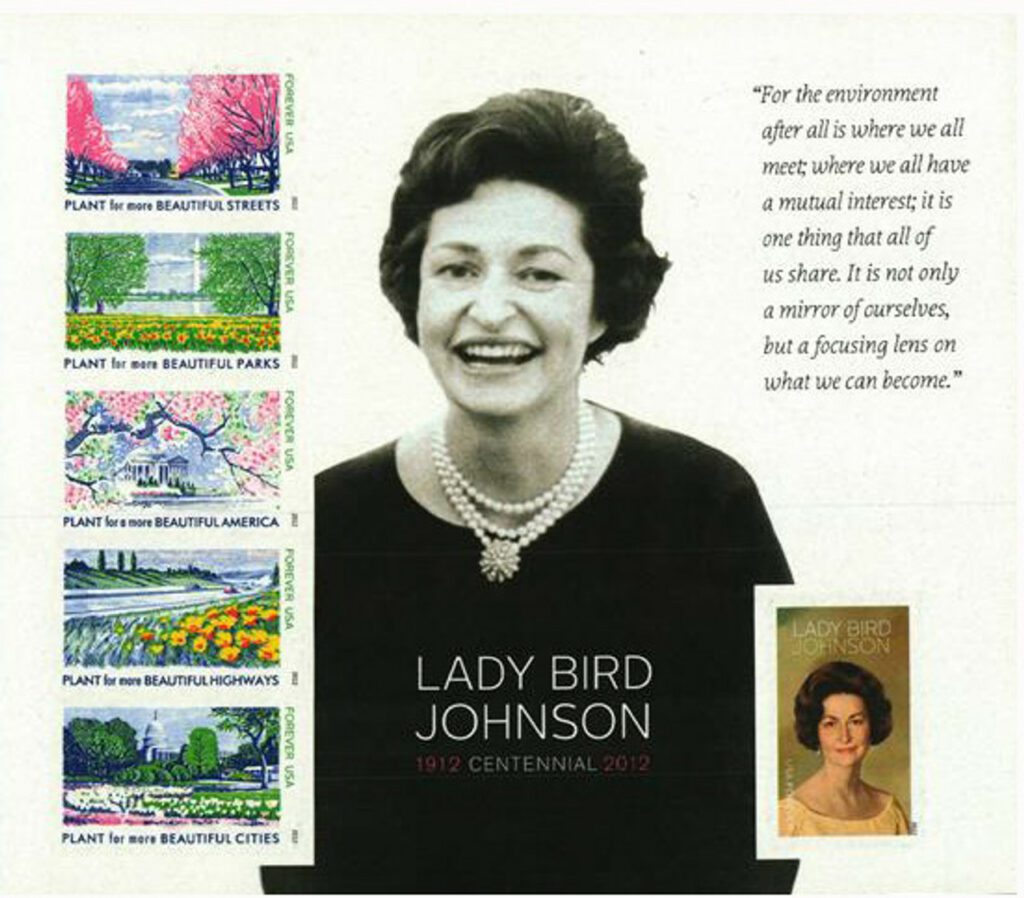
On October 22, 1965, President Lyndon B. Johnson signed the Highway Beautification Act into law. The law had been spearheaded by his wife, and was even nicknamed after her, called “Lady Bird’s Bill.”
Congress had first tackled the issue of highway beautification in 1958 with the passage of the Bonus Act. It gave states a bonus of one-half of one percent of the Federal highway construction costs in areas where they controlled outdoor advertising within 660 feet of the road. Amendments to the act were passed in the next few years, and in all, 25 states participated in the Bonus program.

Then in 1964, Lyndon and Lady Bird Johnson were traveling across America while campaigning for the 1964 election. At a stop in Oregon, Mr. Johnson told the audience the unsightly junkyards and billboards along the roads “are driving my wife mad.” When Johnson was elected, cleaning up the nation’s roadsides became a priority for both the president and Mrs. Johnson.
During his State of the Union Address in January 1965, President Johnson spoke about their plans to beautify the nation’s highways. The following month, he announced the White House Conference on Natural Beauty, to be held in May. The Bonus Act was set to expire that June and the Johnsons sought to “recommend legislation to insure effective control of billboards along our highways.”
In addition to the president’s actions, Lady Bird used her quiet strength and Southern charm to persuade government officials, the media, and the citizens of the US that “to make the highways more beautiful would certainly add a lot to our pleasure in living.” She encouraged the planting of trees and flowers along the roads and hoped to change American attitudes towards conservation. Though the act was met with significant opposition, particularly from businesses who would lose valuable advertising space, the First Lady was very convincing and would not back down.
Lady Bird’s diligence paid off and the act, nicknamed “Lady Bird’s Bill,” passed the Senate in September and the House in October. President Johnson signed it into law on October 22, 1965. The new law controlled the use of billboards along interstates, sought to reduce the number of junkyards along the roadways, and encouraged landscaping during construction to reduce erosion and make highways more enjoyable to travel. States that did not comply were at risk of losing 10 percent of their Federal highway funds.
As a result of the Highway Beautification Act of 1965, our interstates are no longer littered with junkyards and billboards. Instead, travelers experience artistic landscaping and wildflowers in bloom.
After the law was passed, stamps were issued to publicize it and other beautification programs and encourage Americans to take pride in their country by planting flowers and trees. Each stamp represented a different area improved by the programs (cities, parks, highways, and streets). In 2012, the artwork on these stamps was used again as part of a souvenir sheet issued to celebrate Ladybird’s 100 birth anniversary.
| FREE printable This Day in History album pages Download a PDF of today’s article. Get a binder or other supplies to create your This Day in History album. |
Discover what else happened on This Day in History.




This article is wonderful. I remember taking road trips with my family and my father describing the work of Lady Bird.
“Lady Bird” was a wonderful First Lady.